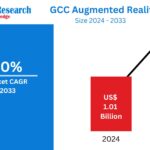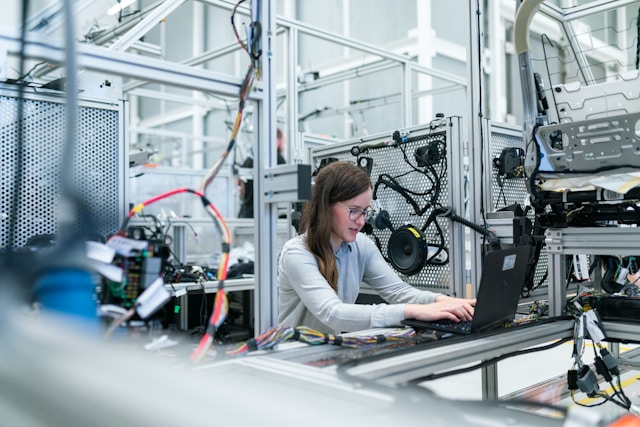7 Key Features to Look for in Modern EEG and Neurology Software
Advancements in medical technology have transformed the field of neurology, particularly in how clinicians record, analyze, and interpret brain activity. Electroencephalography (EEG) plays a crucial role in diagnosing neurological disorders, and the software that supports EEG analysis has evolved dramatically in recent years. Modern neurology software powered by platforms like neuromatch has introduced new possibilities in accuracy, efficiency, and collaboration.
For neurologists, researchers, and healthcare institutions looking to adopt or upgrade their EEG and neurology software, understanding the essential features can be overwhelming. This guide highlights seven key features that any modern EEG and neurology software should have to provide the best support for clinical care and research.
1. Accurate and Automated Data Analysis
Manual interpretation of EEG signals is tedious and can be prone to errors. Modern neurology software must offer advanced algorithms capable of automatically identifying significant EEG events such as spikes, seizures, and abnormal patterns.
Platforms like neuromatch leverage artificial intelligence to enhance this automation, ensuring higher accuracy and consistent analysis. This reduces the burden on clinicians and helps in early detection and diagnosis of neurological conditions.
2. Intuitive User Interface
Given the complexity of EEG data, having an intuitive and user-friendly interface is vital. The software should present data clearly, allowing clinicians and researchers to navigate through recordings easily and make quick, informed decisions.
Visualizations like heat maps, waveforms, and event markers should be customizable and interactive. The ability to zoom, annotate, and compare data across sessions contributes significantly to better understanding and communication within clinical teams.
3. Real-Time Collaboration Tools
Neurological diagnoses often require input from multiple specialists. Modern neurology software should facilitate real-time collaboration, enabling neurologists, technicians, and researchers to view and analyze EEG data simultaneously, regardless of location.
Neuromatch, for instance, supports remote access and collaborative review, speeding up consultation and improving diagnostic accuracy. This feature is particularly valuable during emergencies or when expert opinions are needed quickly.
4. Comprehensive Reporting Capabilities
Comprehensive and customizable reporting tools are essential for documenting findings and communicating results with patients or other healthcare providers. Modern EEG software should generate detailed reports that include key findings, visual data snapshots, and interpretive notes.
Reports should be exportable in various formats and integrated with electronic health records (EHR) systems to streamline administrative workflows and ensure all pertinent medical information is accessible in one place.
5. Compatibility and Integration
Healthcare environments rely on multiple systems, so compatibility is a must. A good neurology software solution should easily integrate with existing hospital information systems, EHR, and other diagnostic equipment.
Seamless integration reduces workflow disruptions and data silos, ensuring that neurological data can be cross-referenced with patient histories, imaging, and lab results, leading to more comprehensive care planning.
6. Scalability and Customization
Different institutions and practices have varied requirements. Scalable and customizable software allows users to tailor the system according to their needs, whether it’s a small clinic or a large research hospital.
Customizable modules and adaptable algorithms enable the software to evolve with emerging neurological research and changing clinic demands, ensuring long-term usability and investment protection.
7. Data Security and Compliance
Handling neurological data involves sensitive patient information, so robust security measures and compliance with healthcare regulations (like HIPAA) are non-negotiable.
Modern neurology software must implement encryption, secure user authentication, and audit trails to prevent unauthorized access and maintain patient confidentiality, building trust between patients and healthcare providers.
What People Also Ask
What is neuromatch in neurology software?
Neuromatch is a cutting-edge platform that uses artificial intelligence and machine learning to improve EEG data analysis, enhancing accuracy and enabling real-time collaboration among neurologists and researchers.
Why is automation important in EEG software?
Automation reduces human error and speeds up the process of identifying critical EEG events, allowing clinicians to focus on treatment decisions rather than manual data sifting.
Can EEG software integrate with electronic health records?
Yes, modern EEG and neurology software are designed to integrate with EHR systems, streamlining the storage and retrieval of patient data.
Is remote collaboration possible with neurology software?
Many advanced platforms, including neuromatch, support remote access and real-time collaboration, allowing specialists to review EEG data from different locations.
How do EEG software solutions handle data security?
Top EEG software use encryption, multi-factor authentication, and comply with healthcare data protection laws to ensure patient information remains confidential and secure.
Conclusion
Selecting the right EEG and neurology software is critical for modern neurological care and research. Features such as automated analysis, intuitive interfaces, real-time collaboration, detailed reporting, and strong security protocols are essential to harness the full potential of EEG technology.
With platforms like neuromatch leading the way, neurology software is becoming more powerful and user-friendly, offering better support for clinicians and researchers alike. By focusing on these key features, healthcare providers can improve diagnostic accuracy, enhance patient outcomes, and streamline workflows, shaping the future of neurological care.
- 7 Key Features to Look for in Modern EEG and Neurology Software
- 7 Key Features to Look for in Modern EEG and Neurology Software
- EEG software
Related posts:
 Syna World Redefining Modern Fashion & Syna Worldwide More Than a Brand
Syna World Redefining Modern Fashion & Syna Worldwide More Than a Brand
 How the AED to PKR Open Market Rate Affects Pakistani Expats in UAE
How the AED to PKR Open Market Rate Affects Pakistani Expats in UAE
 Top Temperature Data Logger Manufacturers in India – Reliable & Accurate Solutions Powered by Nimbus Technologies
Top Temperature Data Logger Manufacturers in India – Reliable & Accurate Solutions Powered by Nimbus Technologies
 GCC Augmented Reality Market Size, Forecast 2025-2033: A Comprehensive Industry Analysis
GCC Augmented Reality Market Size, Forecast 2025-2033: A Comprehensive Industry Analysis
 Embracing the Call — Supporting Life Through Christian Faith
Embracing the Call — Supporting Life Through Christian Faith
 Make Waves on Your Birthday with SunFunFTL’s Luxury Boat Rentals in Fort Lauderdale
Make Waves on Your Birthday with SunFunFTL’s Luxury Boat Rentals in Fort Lauderdale
 Biodegradable Packaging Trends Across Asia-Pacific & Global Markets
Biodegradable Packaging Trends Across Asia-Pacific & Global Markets
 How to Use Magazine WordPress Themes to Create a Unique News Experience
How to Use Magazine WordPress Themes to Create a Unique News Experience







